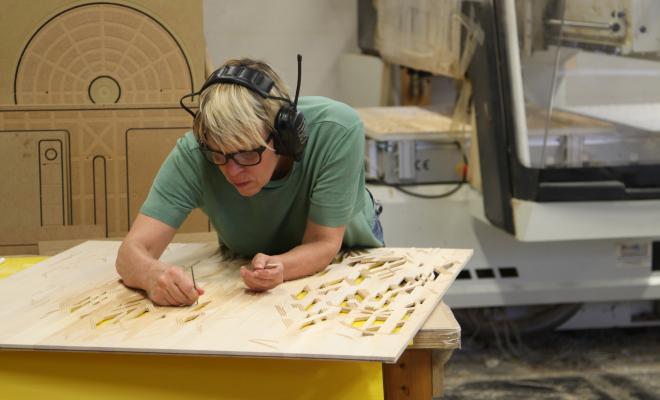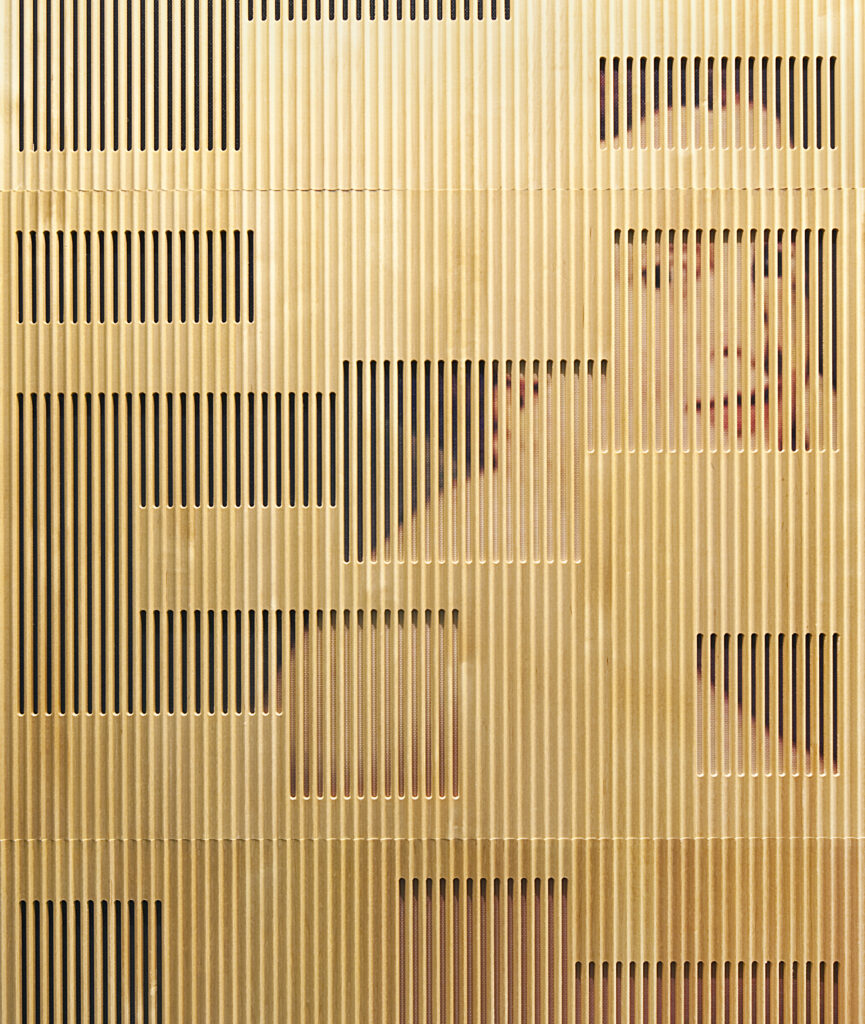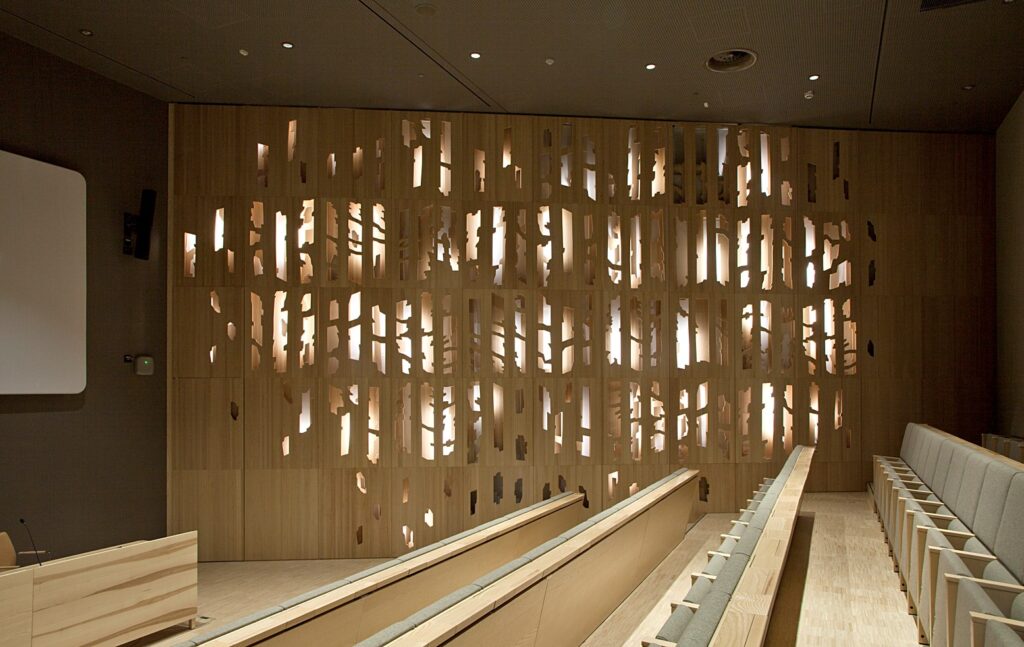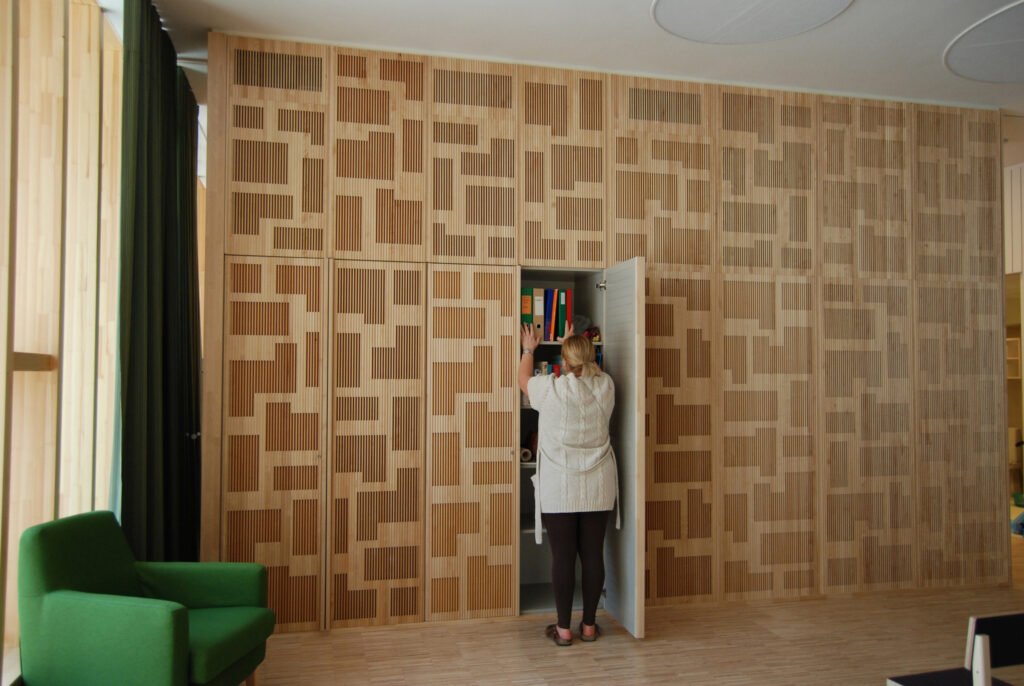Ilona Rista brings wood from behind the curtain onto the stage
Can sculptor Essi Renvall’s granddaughter become anything but an artist? ”Well, at least in my case this tradition is continuing,” Ilona Rista says with a laugh. She is known for imposing, unique spatial works of art made from wood that function as wall elements. In her spatial artwork, Rista has combined the tradition of woodworking with the new possibilities offered by information technology.
Creativity and identity were found in wood
But why wood? “When my grandmother Essi saw my inclination toward handicrafts and my interest in materials, she told me to go to Jurva, they have decorative carving there. So after the years I spent at the University of Art and Design Helsinki and at the St. Petersburg Academy of Arts, I went to the vocational crafts school in Jurva. At Jurva’s handicrafts-based school I was given basic instruction in woodworking and materials expertise. At the same time I saw how half-dead woodworking was in Finland at the time and how few skilled carpenters there were. At first I carved all woodwork by hand. In the summers I worked on restoration of plaster decorations at buildings in Finland, Sweden and Russia, and in the winters I carved wood and sought my own expression and identity as a wood artist,” Rista recalls. During that time I didn’t want to let machines decide form, I wanted to first find a suitable form for myself by hand and combine subjects with the residential environment.”
Information technology in the service of art
Today, the material Rista uses in her wood work is 10-millimetre thick birch board, and the actual work phase begins once the subject has been designed and programmed. A CNC milling machine moulds Rista’s drawings to be suitable for production. ”Now I carve wood with a computer. It’s a conscious decision to work with wood, not for example with glued veneer,” Rista says.
Designs can be sent directly to computerised milling machines in manufacturing, large surfaces can be produced and pieces can be copied. ”Everything starts with design. Regardless of machine milling, actual creative work still happens through drawing, cutting paper and thin wood veneer, and as designs progress 3D-modelling and image processing are also often needed.”
Spatial art works are part of construction
Rista believes there would be many functional uses for spatial works of art made of wood, particularly in public-sector and office construction. ”These could serve as high-quality acoustic reliefs and at the same time as opening and concealing walls, which can be combined with the building’s other materials. Wooden elements can bring humaneness, warmth and pleasure to otherwise plain spaces and they are an ecological alternative to acoustic punch plates meant for bulk use,” says Rista.
”I feel that my work is part of construction and part of the building. My works are always a result of collaboration between the architect, acoustician and artist, when the goal is a new kind of creativity where the special characteristics of each site have to be taken into consideration. It includes the overall view of the designer about the space, management of echoes and often the architect has also designed building services technology for it, AV equipment or other uses to conceal parts of the building.”
Wood holds a promise
In addition to her travels, Rista says she looks for ideas close to nature in Finland. ”The old wooden Karelian churches of my ancestry hold a promise that wood can do anything at all, when it has a long history of many hundred years behind it. In nature I see how different materials behave. Finnish woodworking culture is tenuous and not at all multidimensional or knowledgeable about history. When you look for examples from far away, it bring air flow, buoyancy and understanding to your own work. I feel that in my work I’m part of the construction chain using modern technology.”
For 2017, the 100th anniversary of Finnish independence, Rista is putting together an exhibit at the Lusto Finnish Forest Museum and will present her new works this autumn at the Helsinki Design Week. ”Even though my works are strongly weighted toward art, my identity is in the field of industrial arts. Art and design are always applicable when they’re used in a building’s details, interior design and production of its objects,” says Rista.
What would your grandmother, Essi Renvall, say today? ”I think she would be proud. Although my works are close to sculpture, I don’t want to build limiting fences between different forms of expression. Essi didn’t want to limit creativity, but to encourage finding the right forms to express it. I found that in wood.”



